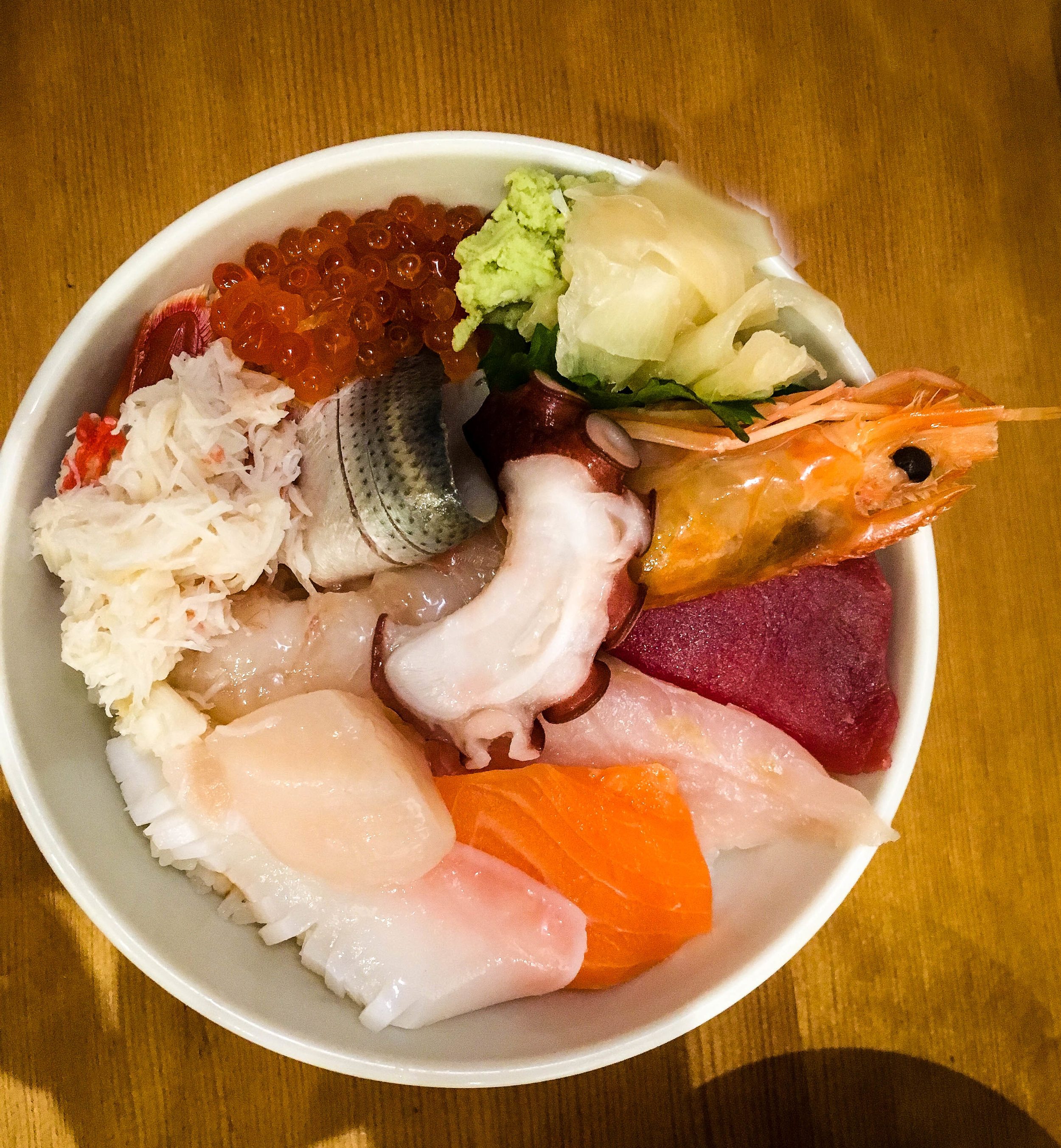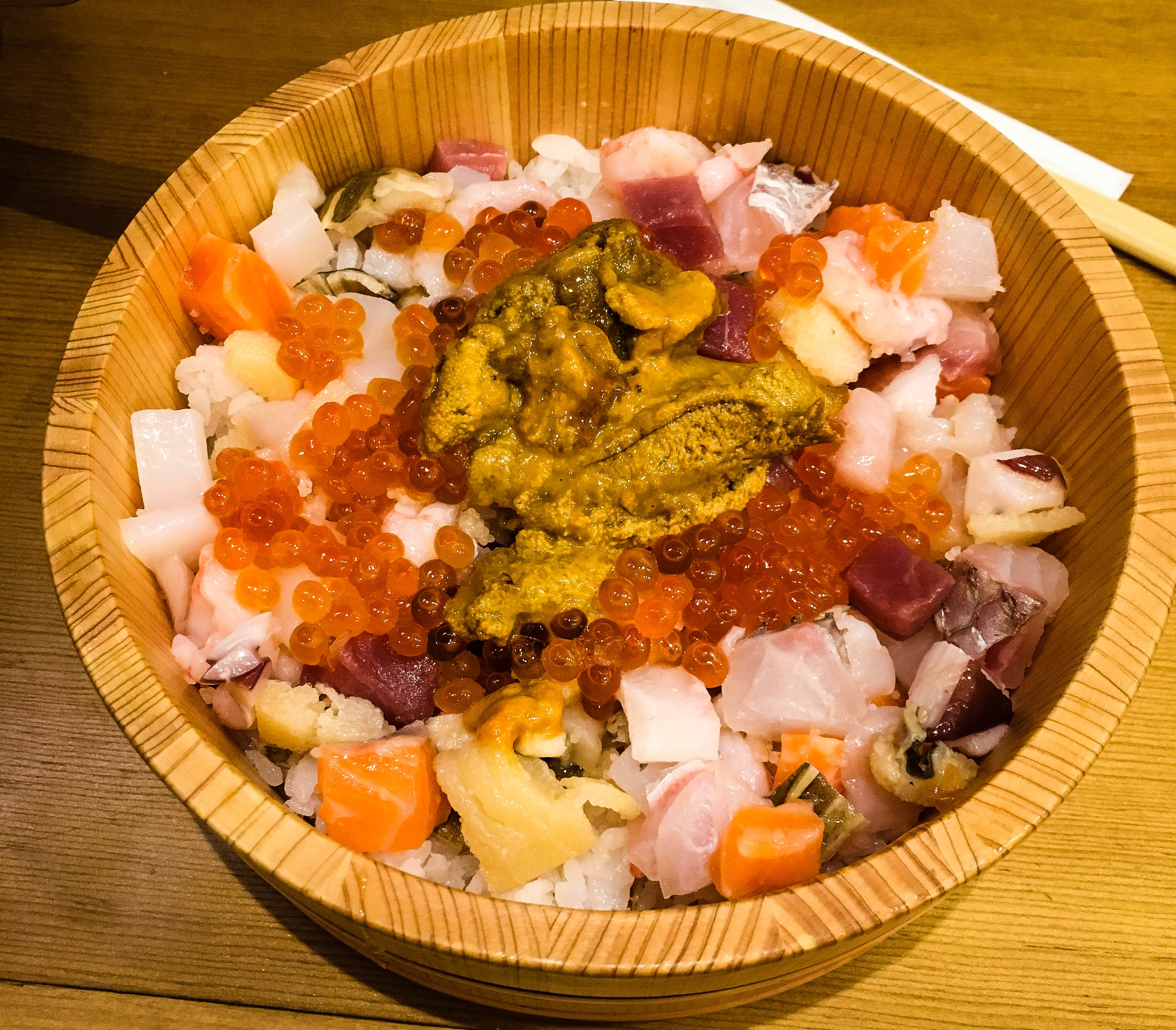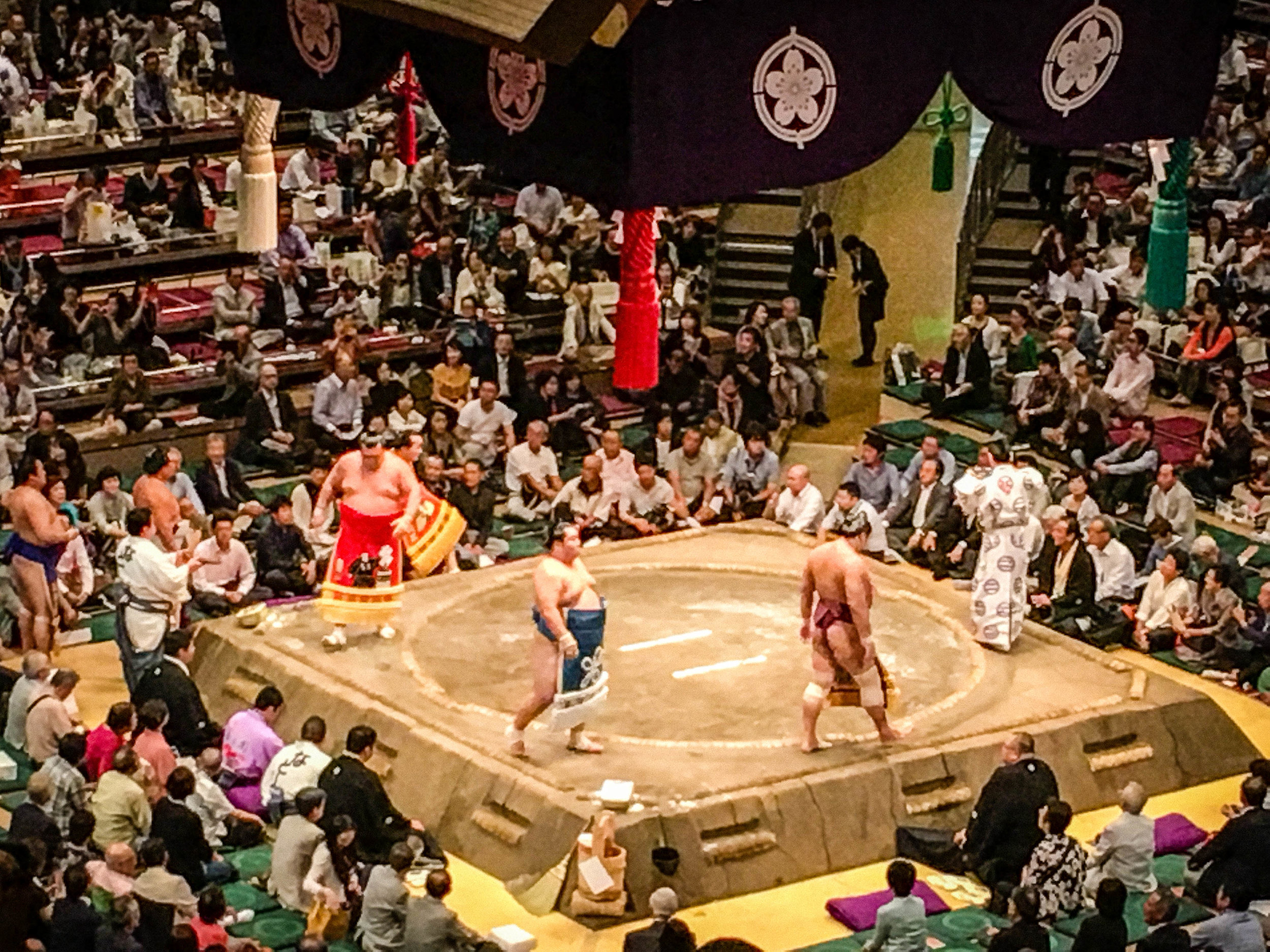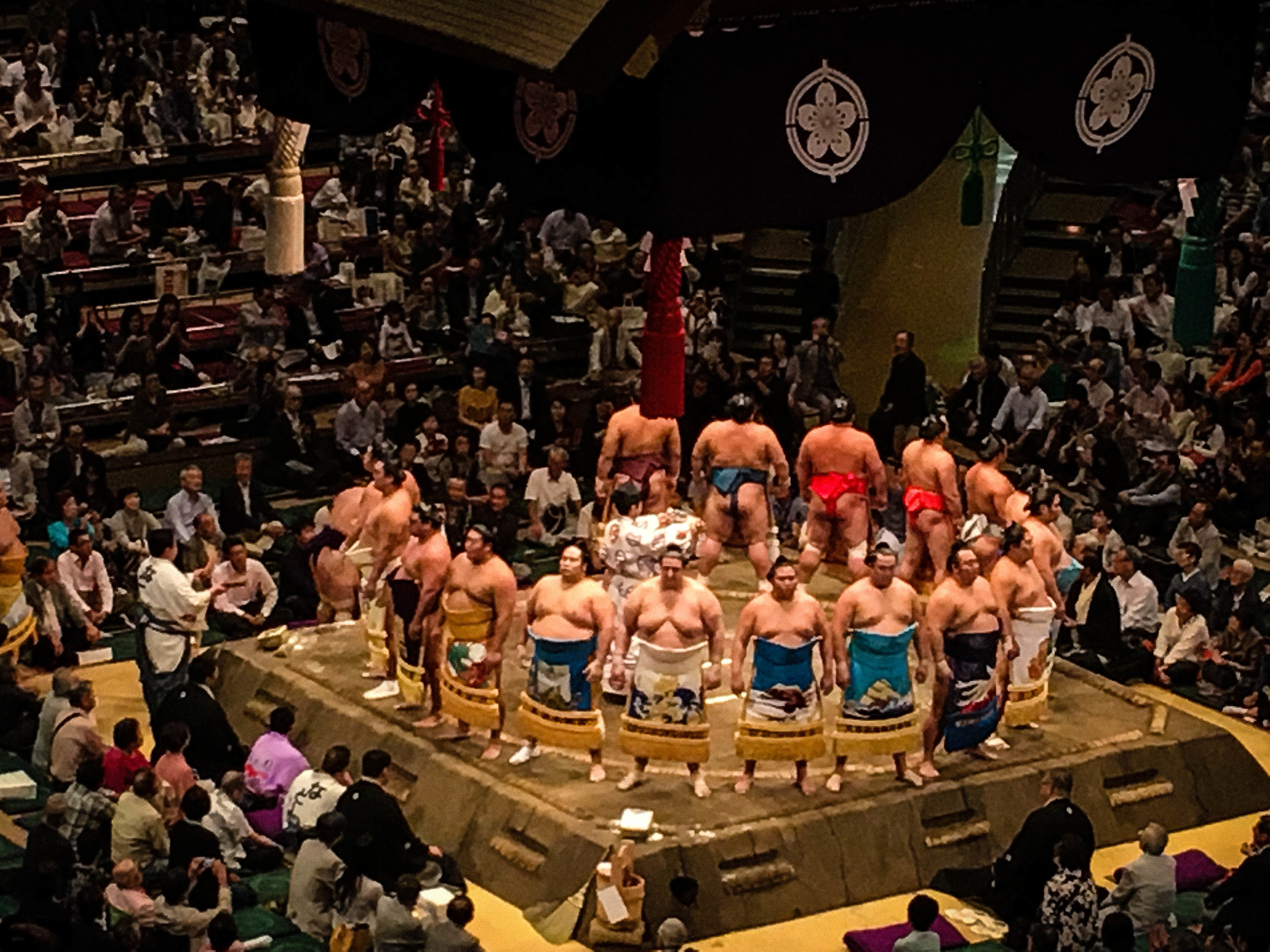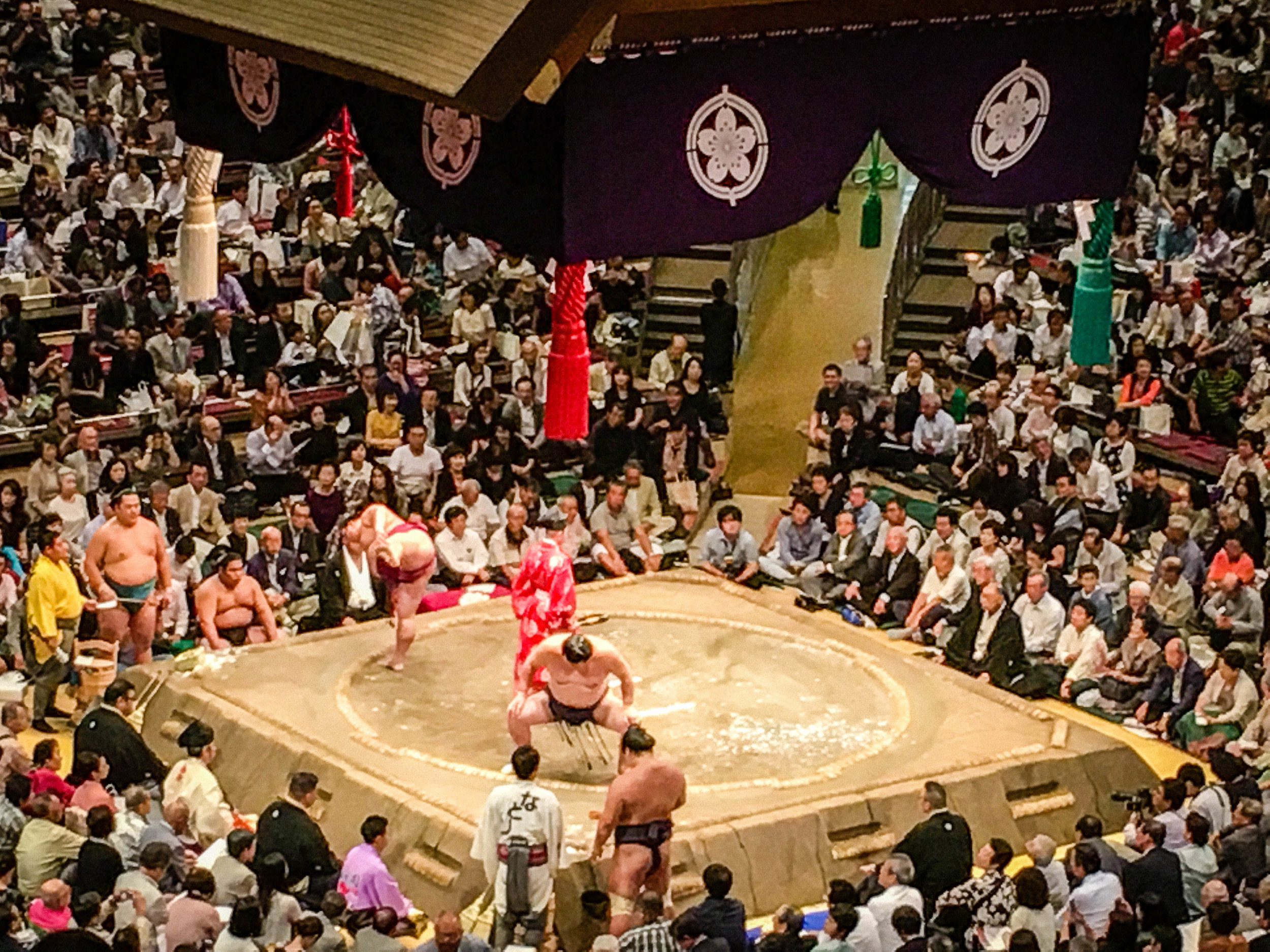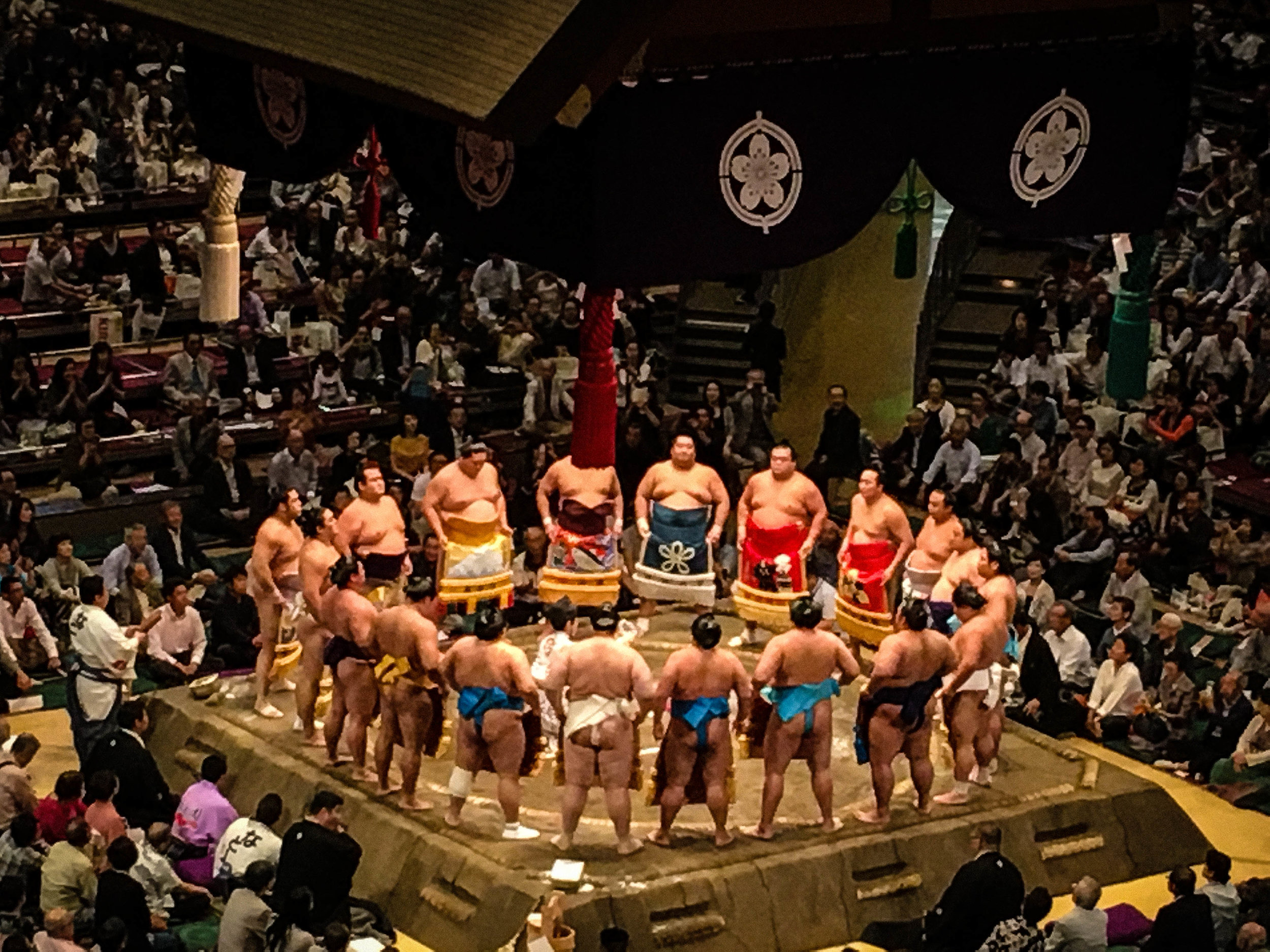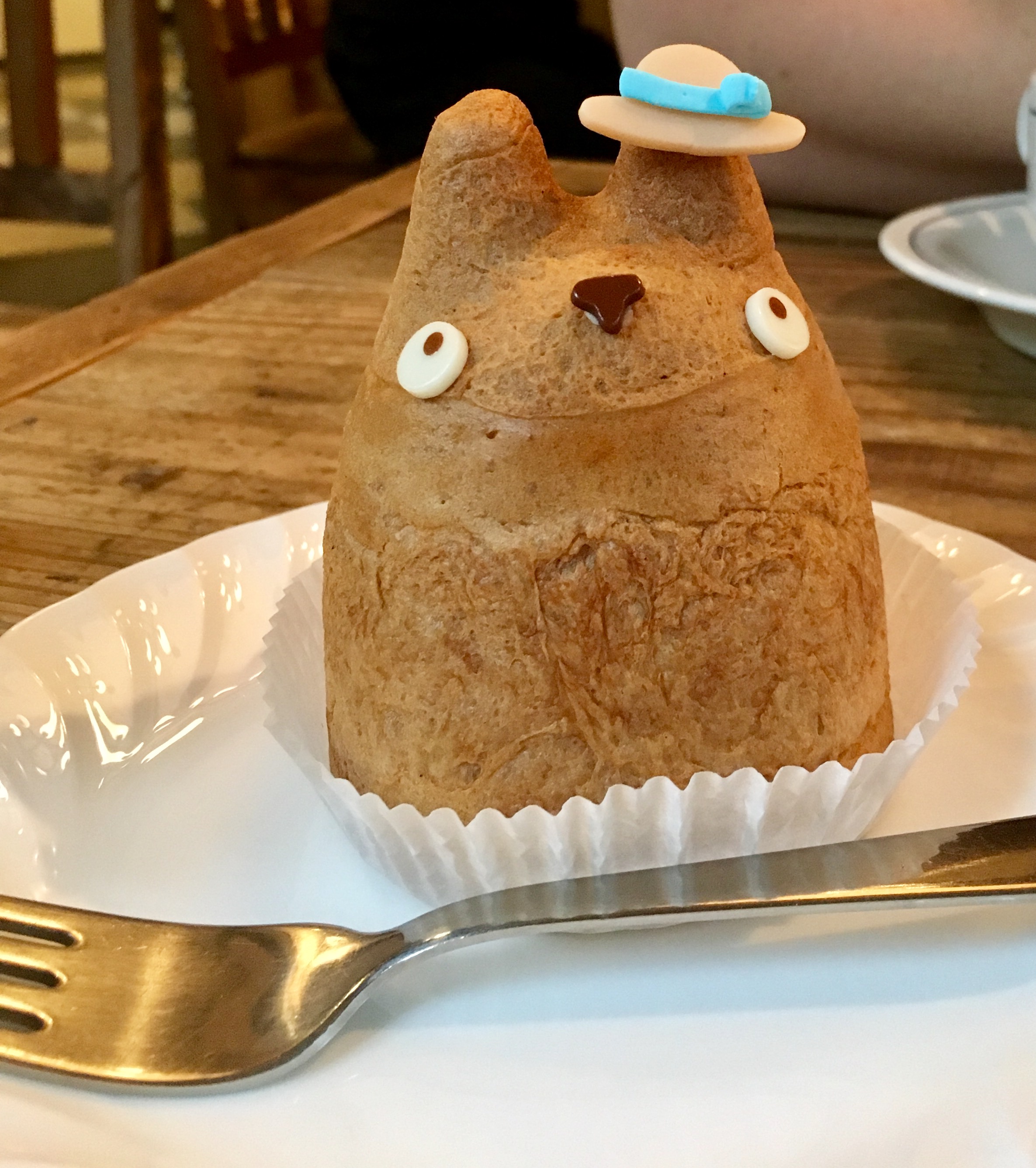The only 7-day Tokyo itinerary you need!
The Japanese capital is one of the world's biggest and busiest cities in the world. The city perfectly blends history with modernism. From grand temples, and Zen gardens to the busy Shibuya crossing to futuristic skyscrapers, Tokyo has it all.
Tokyo is a huge city and obviously, you cannot see all at once. You could spend a lifetime in the capital and you will only see a fraction. So, how to spend 7 days in Tokyo? Here, I’m sharing a list of things to do, from museums, parks and different neighbourhoods will give you plenty of activities to do to fill your week.
Planning your trip can feel a little overwhelming, I know! Here is a 7-day Tokyo itinerary with 3-day trips to explore beyond the capital. This guide is perfect whether it's your first-time visitor or you are a returning visitor. If you are a first-time visitor, Japan can be very addictive and you will want to go back again and again!
Later in the article, you will find an easy-to-follow summary of the 7-day Tokyo itinerary to rock your stay in the city!
Shibuya, Tokyo, Japan. Photo by Jezael Melgoza on Unsplash
Things to do in Tokyo
Shibuya
Shibuya is mostly known for the busy Shibuya Crossing (also called the Shibuya Scramble) is the world’s busiest intersection. There are around 3,000 people using this crossing daily! If you have seen Lost in Translation by Sofia Coppola you will recognize the spot. The intersection gets the busiest during rush hour. Better appreciate this orderly chaos head to the second floor of the Q-Front building to see it from the top.
Aside from the Shibuya Crossing, the neighbourhood is also known for its shopping scene. Shibuya's Center Gai is a bustling pedestrian street filled with shops, cafes, and entertainment venues, while the Shibuya 109 building is a popular shopping destination. The nightlife in the neighbourhood is very alive with its plethora of bars, clubs, and izakayas. You can enjoy everything from craft cocktails and live music to karaoke and themed bars.
Asakusa
In Asakusa, you will find a different vibe, a more calm and traditional atmosphere. The old entertainment district is home to the famous Sensoji temple, a Buddhist temple from the 7th century. It is dedicated to Kannon, the Buddhist goddess of mercy. The Kaminarimon Gate is the most iconic landmark in the area and probably of the city. It is characterized by its giant red lantern, the gate is also called Asakusa’s Thunder Gate. Nakamise Shopping Street leads it way to the temple and it has more than 80 shops, this is the perfect place for your souvenir shopping. I felt that these shops had too many tourist traps and souvenir shops. You will find anything from traditional crafts to your Hello Kitty bubblehead to snacks.
However, the temples are worth the visit! This buzzing area was almost completely destroyed by the WWII bombings and much of its infrastructure was lost forever.
If you like architecture, then the Asakusa Culture Tourist Information Center is a must. The eccentric building gives the impression of stacked wood buildings aligned at different angles. Inside, you can ask for information about local sightseeing attractions, culture, and history, as well as offer advice on transport and accommodation. There is also an Observation Deck on the 8th floor. The building is a minute walk from the temple.
Toyosu Market (former Tsukiji fish market)
Famous for its 4 am tuna auction, the market offers plenty to see beyond the auction if you are not an early bird. Doing the tuna auction after your first night could be a good idea if you are jetlagged.
From seaweed to octopus to globefish, the Tsukiji market has everything from the sea. The market is also full of small restaurants offering all different kinds of seafood and traditional Japanese dishes. The breakfast there was amazing! I tried a 3-course meal with chirashi sushi and rice soup.
As of October 6, 2018, the inner market of the famous Tsukiji Market has moved to a new site in Toyosu where it reopened under the name of Toyosu Market. The outside of the market still remains at the Tsukiji Market.
Edo Museum
The Edo period, the middle ages of Japanese history, was the longest historical period in the archipelago. It extends from 1603 and 1868 and shaped very strongly the culture of Japan, a lot of the traditions are a direct heritage of this feudal reign.
The museum recreates historical moments and scenes of daily life with miniature figures and live-size maquettes. The work done is extremely detailed and beautiful. The museum not only showcases scenes from the Edo period but also has a section about Tokyo's history from the first buildings to the metropolis that it is today. You travel through the emperors, the wars to the crazy Harajuku fashion style from the late ’90s.
A lot of the explanations are in English and in other languages which is great to fully understand the Japanese culture. Most of the expositions are interactive so you can fully be immersed in history.
The city also features several world-class museums like the Tokyo National Museum and some quirky museums as well as the Snoopy Museum.
Imperial Palace & Tokyo station
To our surprise, we were not able to go inside the Tokyo Imperial Palace as it is only open to the public 2 days per year as it is still the residence of the emperor and his family. (This is what you call a lack of preparation.) The palace is located in a former Edo Castle with a large park surrounded by moats and stone walls. However, you can visit the Imperial Palace East Gardens. The gardens are a hot spot for cherry blossoms viewing.
A few minutes away from the palace, you will find Tokyo Station. The station is a city in itself. The main facade is one of the few brick-built infrastructures in the city, it has also survived several earthquakes, fires and WWII bombings. Opened in 1914, the station has more than 400,000 passengers per day. You will find everything from bakeries with cute Hello Kitty doughnuts, to clothes stores.
Tokyo from above - get those beautiful views!
When travelling, I always like to get the views of the city from above. Tokyo is one of those cities that is so vast, that you will be astonished by its size.
The Tokyo Metropolitan Government Building has a FREE observatory desk. The building is located in the bustling district of Shinjuku. On your way to the deck, don’t forget to look up, the architecture of the building which is quite impressive. This observatory is always very crowded so I will suggest arriving early in the morning.
If the government building is too crowded, you have other options. Tokyo SkyTree is located in the North-Eastern part of the city or the iconic Tokyo Tower. The tower design was inspired by the Eiffel Tower in Paris. If you are in the district at night, you will have the best view of the tower as it is illuminated and twinkles against the lesser-illuminated Tokyo streets. If you are taking the latter option, I recommend visiting the Buddhist temple of Zojoji Temple and Shiba Park. The temple is one of the largest and most important Buddhist temples in all of Japan.
The Roppongi Hills Tokyo City View Observatory is another option, especially if you like late-evening sightseeing. The indoor observation deck closes at 11 pm on weekdays and at 1 am on Fridays and Saturdays. After taking in the views, you can hang out in this popular nightlife and entertainment district. Roppongi is also known for being an expat hub.
Teamlabs
teamLab Planets is an immersive digital art museum where you step into a mesmerizing world of interactive art installations and sensory experiences. Created by the innovative art collective teamLab, this unique museum offers a journey through various themed spaces, each designed to stimulate the senses and inspire wonder. While we did not visit temLab, we did the SuperBlue in Miami which collaborated with the art collective. I can’t wait to go to Tokyo to visit it!
The museum has a series of interconnected rooms and installations, where light, sound, and digital projections come together to create immersive environments that blur the line between art and reality. From walking through a room filled with towering waterfalls of light to wading through a pool of digital flowers that bloom and wilt in response to movement, every experience at teamLab Planets is designed to evoke a sense of awe and discovery.
One of the most iconic installations at teamLab Planets is the "Floating in the Falling Universe of Flowers," where visitors can lie down on a soft floor and watch as an ever-changing array of colourful flowers blooms and cascades around them. Another highlight is the "Drawing on the Water Surface Created by the Dance of Koi and People – Infinity," where visitors can use their body movements to interact with digital koi fish swimming in a virtual pond. There is also teamLab Borderless which is on another location from the Planets exhibition. You can choose which one to do or do both.
Akihabara
This is an otaku (diehard fan) anime and manga heaven. The electronic district is filled with stores selling anything from cables to TVs. Known for the manga & maid cafes, you will see girls dressed like maids giving you promotions for the different theme cafes on the busy streets. This part of the city has a lively nightlife scene, with countless bars, izakayas and karaoke joints lining its streets.
In this district, you will find complexes of several floors dedicated to karaoke, Pachinko (slot machines), & video games, such as the Sega building. This building had multiple floors of arcade games. It was open for more than 17 years, sadly, due to COVID-19, the center closed.
The neighbourhood of Akihabara also has a lot of animal cafes. I know that these cafes are super cute but sometimes they put the lives of the animals at risk. If you really want to go, I would suggest doing research on which cafe is the most ethical and how well they treat their animals.
Photo by Freeman Zhou on Unsplash
Harajuku
I was extremely deceived by the famous Takeshita Dori. Being a 90s girl, I grew up with this extravagant vision of Japanese teens with cosplay costumes and weird clothes. Sadly, I did not see any of this! As I later found out, this teen subculture is now passé. The once-hipped neighbourhood is now living off its reputation with some kawaii stores and cafes remaining. If you still want to get some of the experience, I would suggest going on a weekend. Many of the people who get all dressed up are teenagers and young adults who during weekdays are studying.
The main street is Takeshita Street, a narrow pedestrianized street lined with colourful shops, trendy boutiques, and quirky cafes. The street is also home to an array of delicious street food stalls offering everything from crepes and cotton candy to savoury snacks like takoyaki (octopus balls) and yakisoba (stir-fried noodles).
The colourful Totti Candy Factory is a popular stop. The giant colourful eye-catching cotton candy is causing a rave on IG.
Gyoen National Garden
Gyoen National Garden, also known as Shinjuku Gyoen National Garden, is a serene oasis nestled in the heart of Tokyo, Japan. The park was originally a residence for feudal lords during the Edo period, Gyoen National Garden was later converted into a public park and designated as a national garden in 1879.
Visitors can explore three distinct styles of gardens within the park: a traditional Japanese garden with ponds, bridges, and teahouses; a picturesque English landscape garden with wide lawns and flowering trees; and a formal French garden with manicured hedges and ornamental flower beds. If you are going during the cherry blossom season, this is a popular sport to view the trees. Besides the natural component, you can see the Taiwan Pavilion, a gift from the government of Taiwan, and the Kyu Goryo-tei, a traditional Japanese house with a thatched roof.
Meiji Shrine & Yoyogi Park
Yoyogi Park is beautiful, located in the middle of the busy metropolis, the park is one of the lungs of the city. In the garden, you will find a temple, Meiji Jingu, dedicated to Emperor Meiji and the Empress Shoken. He is remembered as the founding father of progress in the country. He took Japan out of the Edo Period and modernized it. Under his reign, Japan saw an industrial and cultural shift. They started to adopt a lot of Western ideas and traditions. Thanks to this era, you will find AMAZING French pastries in Japan! Seriously, French pastries in Japan are a thing, definitely, a must-try! To enter the shrine you need to pass by a huge torii gate. In the complex, you can also find the Treasure House and the Museum Annex Building which displays the personal belongings of the imperial couple and other expositions.
If you like parks and green spaces, then you should also visit Ueno Park. It is particularly famous during the cherry blossom season.
Ebisu
During our 7-day trip to Tokyo, we decided to rent an apartment in Ebisu through Airbnb. The neighbourhood is renowned for the high concentration of bars, restaurants and tachinomi ("stand and drink") bars. This was perfect for us since when we came back from our travels we could enjoy the neighbourhood nightlife. On the first night, we befriended the owner of Buri an Iranian immigrant that has been living in Tokyo for the past 20 years. The bar is a typical East meets West as it has the perfect mix of foreigners and locals. It specializes in one-cup sake from around Japan. The tachinomi also offers cheap eats to enjoy your drink.
The laid-back neighbourhood also has the Yebisu Garden Place. This “city within a city” is a complex that was built in the former Yebisu beer factory of the same name. Here you can taste the Yebisu beer and learn about the brewing techniques.
Golden Gai
In the heart of the modern neighbourhood of Shinjuku, you will find Golden Gai. Just a couple of blocks, these tiny streets will feel like a blast from the past, the architecture reflects the prewar era and the Showa era. These old-school alleyways, or Yokocho, are covered with graffiti and dim lighting, they count more than 250 bars on top of each other. Each bar has its own vibe and style, you can enter in a bar decorated from the ’60s with rock bands posters and old vinyl to high-end cocktails bar. The spaces are very small, in some cases, you will not be able to sit more than 10 guests. Most of the bars have a cover fee but the drinks & the food are not that expensive once you are inside.
After all the drinking, you must get hungry so walk a short 9 min to Omoide Yokocho. The name roughly translates as Memory Lane but it also has the awkward nickname of “piss alley” due to its entrance by the train tracks. Omoide Yokocho is full of Japanese eateries that prepare izakaya food (this about them as Japanese tapas) Here, you will find a freshly grilled variety of seafood, yakitori, grilled meat and more! Beware that you are allowed to smoke inside these eateries but not outside.
In Tokyo, you have 17 Yokocho to visit and taste.
Sumo tournament
If you are looking for a sumo experience, then you should head to the Ryogoku district. The district is home to the famous Kokugikan Sumo stadium, sumo stables and Chanko restaurants.
The Sumo tournament is not at all what you would expect! While the iconic sport is known worldwide, I think it is misunderstood by foreigners. Sumo is a traditional Japanese sport with a history dating back centuries, characterized by its unique blend of athleticism, ritual, and tradition. Beyond its physicality, sumo is deeply rooted in Japanese culture and Shinto religious practices. The sport dates back to the 8th century, the spiritual side was performed at shrines to ensure a bountiful harvest and to honour the spirits – known as kami.
The centenary sport which is inherent directly from the Edo period, put forward men's wrestling. Each match only lasts a few seconds and before each match, the wrestlers do a ceremonial opening - which sometimes is longer than the actual match. The tournament only happens 6 times per year and lasts for around 15 days for more than 8 hours each day. If you want to attend a tournament, I suggest buying the tickets in advance from the comfort of your home.
The atmosphere is very calm, if you are thinking about loud fans and a cheerful ambiance, you might be shocked. Each round calls for the utmost silence so the wrestlers don’t get distracted. The Kimonos and the celebratory attire are elaborate and have rich patterns and embroidery. Every movement has a signification.
The image that I had of the wrestlers were huge persons but in reality, they are not that big when compared to the build of some men in North America.
Chanko restaurants
After or before heading to the arena, go for a traditional sumo food, Chankonabe. This Japanese stew comes with full proteins, veggies and rice. The hot pot is a staple in the diet of sumo wrestlers due to its high protein and calorie content, ideal for fueling their rigorous training regimen. Don’t worry the portions are not gigantic! You will find a lot of restaurants serving the dishes around the arena.
Where to shop in Tokyo?
You might find that shopping for clothes in Japan can be extremely difficult as most of the clothing is one size fits all. I’m a size “S” in North America with a large bust and very few clothes fit me.
The chain department LOFT has countless stores across the country. There you might find cute souvenirs that you might actually wear or use. Ginza district is the most well-known shopping district with its exclusive and expensive brands and boutiques. However, it also has the largest Uniqlo and several budget-friendly stores.
If you are looking for souvenirs, Don Quijote, or “donki,” might be a great place. The discount chain store has everything from sweets to souvenirs, to cosmetics.
Where to eat in Tokyo?
If you follow my adventures, you know that I always highlight good places to eat. However, in Japan, as well as in Tokyo, I found it difficult to pinpoint a particular restaurant since EVERYTHING is good! From the food at the train stations to the high-end Michelin-starred restaurant to your corner street sushi, everything was delicious!
Tokyo holds the world record for the most Michelin-starred restaurants within a city. Being the culinary capital of the world, you have plenty of options to dine. If dining at a Michelin-starred restaurant is out of your budget (although some are affordable), look for the Bib Gourmand category. This denomination is given to eateries that offer “quality food at affordable prices”.
A Japanese couple recommended us to eat at 7-Eleven to save money as the prices in the archipelago can be quite high. I know what you are thinking, I thought the same thing, there is no way that I could eat sushi at 7-Eleven! However, they were good, surprisingly. The food is freshly made every day and is significantly cheaper compared to other places.
Ameya-Yokocho, often referred to simply as "Ameyoko," is a street market street located in the Ueno. Translating to "Candy Store Alley," Ameya-Yokocho dates back to the post-World War II era when it originally served as a black market for goods such as sweets, snacks, and American military surplus items. Today, the street is lined with an eclectic mix of shops and stalls selling everything from fresh produce and seafood to clothing, accessories, and souvenirs. Here you will be able to sample local delicacies, such as fresh seafood, grilled skewers, and traditional Japanese snacks.
In search for Totoro cream puffs
I have to say that not being able to go to the Studio Ghibli Museum is one of the things I regret the most! Working in animation and being a Studio Ghibli fan, I was so sad that all the tickets were sold out for the time of our visit. To visit the museum you need to buy the tickets a few months in advance.
To quench my kawaii desire and saddened by not being able to visit the museum, we went on a mission to find Totoro cream puffs. Located in a residential area, Shirohige's Cream Puff Factory is a cafe located in a house fully refurbished for it. The first floor has the kitchen and the take-out counter while on the upper floor, you can sit and enjoy the food. The entrance is decorated with a poster and several memorabilia from the popular movie.
I could not wait to try the Totoro-shaped cream puffs. Luckily they lived up to my expectations. We tried the Custard and Chocolate flavours. There are other things on the menu as well as salads and pasta.
Day Trips from Tokyo
Kamakura
Kamakura is a coastal town located one hour south of Tokyo by train. Known for the giant Buddha sculpture, the beach town offers a laid-back atmosphere and a deeper dive into traditional Japanese culture. This was one of my favourite places we visited in Japan (we did our 3-week honeymoon in the archipelagic country.)
Once the capital of Japan, Kamakura has numerous temples, shrines and other historical monuments. One of the temples we visited was the Hase-dera temple with its many Buddha (cute) sculptures. In the temples, do try elegant Buddhist vegetarian cuisine. Of course, the main attraction is The Great Buddha of Kamakura which is 11.4 meters high, the bronze sculpture is the second tallest Buddha statue in Japan, surpassed only by the statue in Nara.
If you are visiting during the summer, be sure to enjoy the sandy beaches. Here you can also surf in the ocean. The town also has many hiking trails through the mountains for you to enjoy with towering bamboo groves.
Hakone
Renowned for its numerous Onsen, beautiful mountain views and parks, this little mountain resort town feels very touristy the moment you step in, especially with the pirate boat in the middle of the lake. However, it is great for a relaxing weekend getaway, it offers outdoor and artsy activities.
The iconic red torii gates across Ashi Lake with Mount Fuji at the back are the highlight attractions. Other activities include a panoramic ropeway. Unfortunately, we got caught up in a heavy storm so the walk in the forest and the viewpoint weren't very pleasant. And the ropeways were out of reach due to security reasons.
There are plenty of Onsen scattered through the mountain, perfect for relaxing after all the walking. There are even different spa thematics, Onsen Ramen, anyone?
Pro tip: if you have large tattoos, don’t even try to get in an Onsen. There is a strict Japanese etiquette rule where tattoos are forbidden in the Onsens, even if you are non-Japanese. If you have small tattoos, you will need to cover them, with a bandage that you can buy on sight (we saw them available at two places). This tradition dates back to the Edo period and it is a stand against Yakuzas, the Japanese mafia.
Getting around:
You can buy the Hakone Free Pass (not really free, as the name says). The town is accessible by railway and bus. The JR station is Odawara and from there you can take a bus. While you are in Odawara, you can visit the medieval castle.
Kawagoe
Kawagoe is a historic town known for its Edo-era architecture. Often called “Little Edo" for its line with Kurazukuri (clay-walled warehouse-styled) buildings, the town has a sense of nostalgia for the old days. The city's historic district, known as Kurazukuri Street, is lined with traditional warehouse-style buildings, many of which date back to the 18th and 19th centuries. The town has several museums showcasing local crafts and traditions. The highlight of any visit is Kita-in Temple, a historic Buddhist temple known for its striking pagoda and beautifully landscaped gardens.
Don’t forget to visit Candy Alley for its lined stores selling traditional Japanese sweets and cakes. The town is only 30 min away by train from central Tokyo and it can be a good half-day trip. On my part, I was a little disappointed by this little medieval town.
Admire Mount Fuji
Mt. Fuji is only around 100 km from Tokyo. Probably one of the most well-known mountains in the world and has been a Japanese symbol throughout the centuries. The imposing giant can be admired from several viewpoints from the train or you can decide to hike it. In this article, we are only sharing how to admire it from afar, hiking Mount Fiji is another experience in Osaka that we will do another time.
If you only wish to see it from afar, you can take the Tokaido Shinkansen, you will be able to see the volcano. The train goes from Tokyo to Osaka but you can go down before the final destination. We decided to go down to the Shin-Fuji stop. However, it was a little disappointing as it is an industrial sector and there’s nothing to do there, the view of the volcano is not more beautiful than the one from the train.
Mt. Fuji 5th Station is a popular option since it is the starting point for climbers going to the summit. Here you have a popular viewing spot of Mt. Fuji and the Fuji Five Lake. Apparently, the sunrise in this viewpoint is worth waking up early.
The third option is to take the gondola at Mt. Fuji Panoramic Ropeway. This cable car gives you stunning aerial views of Mt. Fuji and Lake Kawaguchiko, on your way to Mt. Tenjyoyama. The ropeway is situated near Lake Kawaguchi.
Lake Kawaguchiko is one of the Fuji Five Lakes is the fourth option. The town has plenty of activities.
Finally, Oshino is a small village in Yamanashi Prefecture is the last option. The village is a UNESCO World Heritage Site that protects eight crystal-clear ponds that are considered to be sacred.
Kyoto
As the former imperial capital for over a millennium, Kyoto boasts a wealth of historical treasures, including UNESCO World Heritage sites such as Kinkaku-ji (the Golden Pavilion), Kiyomizu-dera Temple, and the Fushimi Inari Shrine with its iconic torii gates. You can also wander around Gion, the historic geisha district, or explore the tranquil bamboo groves of Arashiyama.
The city is a 2-hour train ride from Tokyo. I would suggest spending more time in Kyoto than a short day trip, if you are a history buff, you will want to stay at least 2 days.
View of Mount Fuji from the train, a day trip from Tokyo
7 day Tokyo Itinerary
Now that you know about all the things to do in the city, here is a suggested 7 day itinerary for Tokyo. As always, feel free to mix and match!
Day 1: Since on your first day you will probably be tired and jet-lagged, I will suggest taking it easy so head to Asakusa for a more calm and traditional atmosphere.
Day 2: If you are visiting during a Sumo tournament, why not book tickets to the competition? If not, you can wander around the Ryogoku district and then visit the Edo Museum. The museum will help you understand better the Japanese culture. Then in the afternoon go to Akihabara which is only 15 minutes away by metro. You can spend an hour or two at teamLab.
Day 3: Start your day at the Meiji Shrine and at Yoyogi Park. Then go to Shibuya and then Harajuku. Which is only 10 minutes away from the shrine. Shibuya and Harajuku are 5min away from each other.
Day 4: Start your day at the famous 4 am tuna option at the Toyosu Market for breakfast, then head to the Imperial Palace and Tokyo Station. Then finish your day off at Golden Gai for some drinks.
Day 5: Take a day trip like Hakone and finish your day at Ebisu for a delicious meal and drinks
Day 6: Take another day trip like Kamakura!
Day 7: You choose to either spend another day in the city, do another day trip or go to Tokyo Disney Resort which comprises Tokyo Disneyland and Tokyo DisneySea in Tokyo Bay if this is your jam. Choose wisely since you will probably be going to your next destination.
Typical street in Tokyo. Photo by Clay Banks on Unsplash
Practical information for Tokyo
Getting around
The best way to discover a city is to walk around, however, the distances can be a little treacherous. Luckily, the public transport system is one of the best and most efficient in the world. If you are holding a Japan Rail Pass (JR Pass), this allows you to get into the Yamanote line from there you can either walk to your destination or get into the subway system. Be careful, there are different subway companies and you cannot use the same ticket within the different companies. It might be a good idea to buy a Suica Card for your public transportation. The metro system might be a little confusing but there are always people there to help you! If not, you can get a pocket wifi to help you get to your destination.
If you are only staying in Tokyo and you are not going to visit other cities, I will weigh the price of not buying one. If you are only staying in the city you might be better off with your Suica card as you will use it daily and don’t have to worry about the added price of the JR Pass. HOWEVER, if you are planning on doing multiple-day trips, then, by all means, get your JR Pass! The Passes are less expensive if you buy them outside of Japan, so I will suggest having this reflection early in your planning process.
I would highly recommend not renting a car. Public transport works very well and you can easily get in and out of the city and move within the city without any problems.
Chances are that you will be going through Shibuya Station which is one of Tokyo's busiest stations. While you are transiting through the station, take the time to go exit through the Hachiko Exit, named after the famous loyal dog Hachiko, whose statue stands near the exit.
Getting in and out
Tokyo has two airports, Narita International Airport (成田空港, Narita Kūkō, NRT), and Haneda Airport (HND). If you are coming to Japan, you will most likely be arriving at Narita airport which handles almost all the international flights. Haneda Airport is mostly used for national or regional flights. Narita airport is about 60 kilometres outside of Tokyo and you will need to take a train to arrive at the capital. The easiest and most comfortable way is taking the JR Narita Express which leaves every 30 to 60 minutes. However, this option is also the most expensive. If you are looking for a cheaper option, you can take the JR Sobu Line, the Keisei Skyliner or the Keisei Limited Express. I would recommend checking with options that fit best with your schedule and your budget prior to arriving in Japan.
From and to the airport, if you are taking the Narita Express, this efficient bullet train takes you from the Narita airport to the Shinjuku station in 1 hour. This train is included in your JR Pass. You arrive at the Haneda Airport, you can also use your JR Pass, you will need to take the monorail Line.
Currency
The currency is the Japanese yen, you can recognize it by the symbol: ¥; and the code: JPY; also abbreviated as JP¥. The Yen can be easily found abroad at the currency exchange office since it is the third most traded currency. Japan is mostly a cash-based society so you will have to bring lots of cash. Credit cards and debit are not exhaustively accepted in stores and restaurants.
power
The voltage in Japan is 100 Volt. Japanese electrical plugs and outlets are similar to North American ones and you will not need adapters if you are coming from North America.
TAP WATER
You can drink tap water so ditch your plastic bottle and fill your reusable bottle at the hotel.
Safety
Japan is generally considered a safe destination. It has low crime rates. However, as with any travel destination, it's important to take basic precautions.
Do you have any questions about visiting Tokyo? Let me know in the comments below!
Do you like the content? Why not help me by buying me a virtual cup of tea?
PIN IT FOR LATER!


